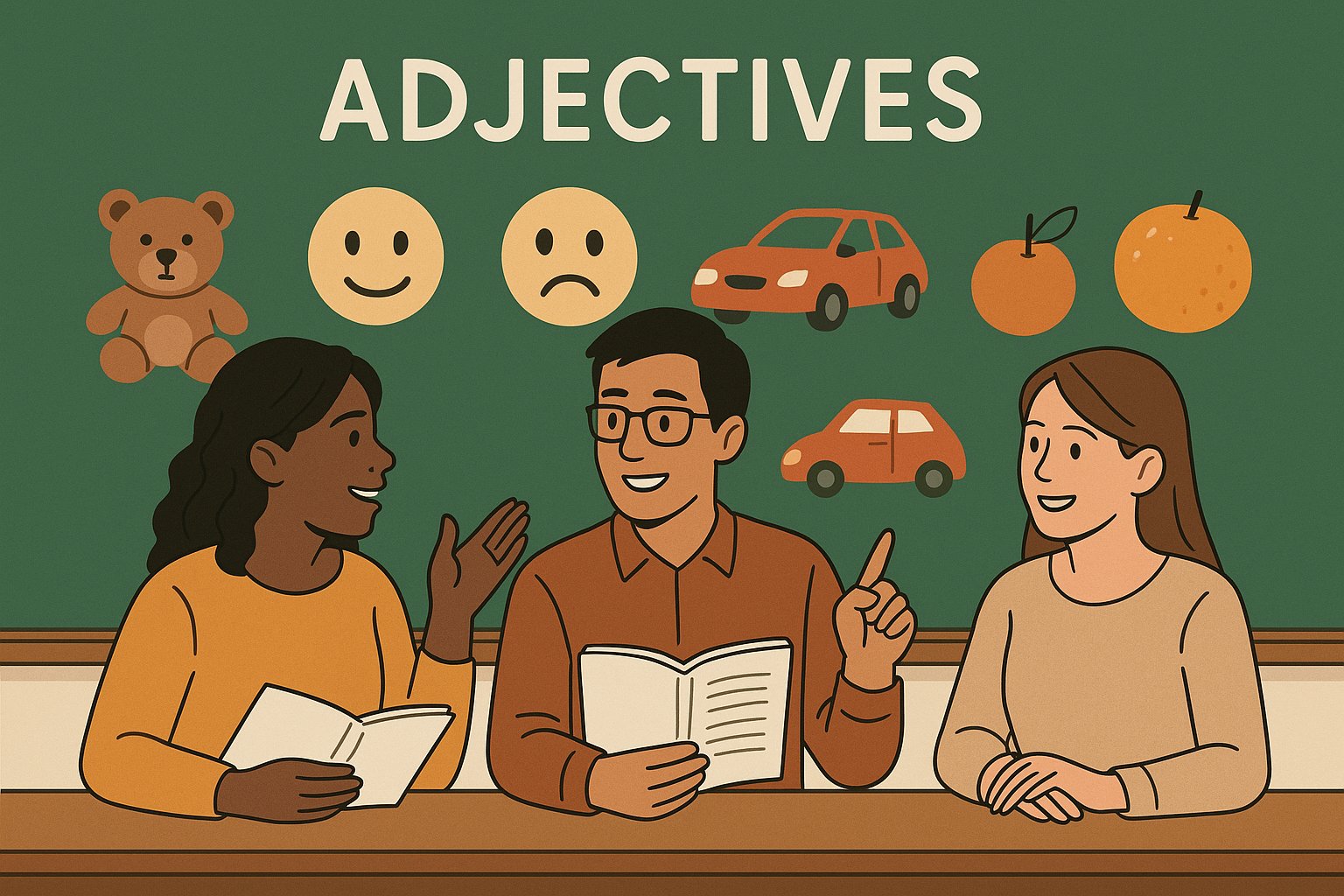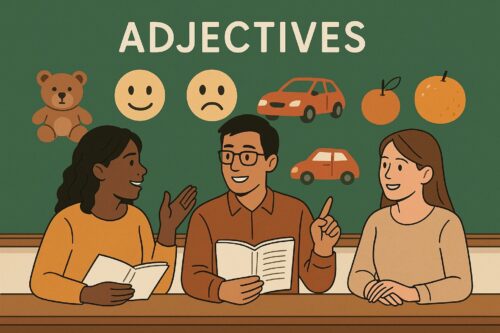Learn how to use adjectives in English with this beginner-friendly ESL lesson, practice guide, and downloadable worksheet.

✳️ Affiliate Disclosure:
Guess what? When you click and buy through our links, you’re doing more than improving your game. You’re supporting us in a way that doesn’t cost you extra but helps us keep bringing you the best drills and tips. It’s a slam dunk for both of us!
Learning how to use adjectives is one of the first big steps in building real English sentences. If you’re just starting to learn English—or you’re teaching beginners—this lesson will help you understand what adjectives are, where they go in a sentence, and how to use them in everyday conversation. With simple explanations, real examples, and a downloadable worksheet, this guide is made for adult ESL learners and the teachers who support them.
What Are Adjectives in English and Why Are They Important?
Adjectives are words that describe people, places, or things. They help us express what something looks like, feels like, or acts like—making our sentences more clear and interesting.
🎯 Why ESL Learners Need to Understand Adjectives
Many beginner students struggle to make full, expressive sentences. Adjectives are one of the first tools that help turn basic sentences into meaningful communication. This blogpost will show you:
- What adjectives are
- Where they go in a sentence
- When to use them
- How to avoid common mistakes
- How to practice with confidence
📘 What Is an Adjective?
An adjective describes a noun. It tells us more about a person, place, or thing. Look at these examples:
| Noun | Adjective | Full Sentence |
|---|---|---|
| cat | small | The small cat is sleeping. |
| man | tall | The tall man is my teacher. |
| house | old | I live in an old house. |
| apple | red | This is a red apple. |
🔠 Where Do Adjectives Go?
In most English sentences, adjectives come before the noun:
- A beautiful flower
- An angry dog
- Some fresh bread
Sometimes, adjectives also appear after a linking verb like be, seem, or look:
- The flower is beautiful.
- He looks angry.
- This bread tastes fresh.
🚫 Common Mistakes to Avoid
- ❌ Saying “a red apple big” (wrong order)
- ✅ Say “a big red apple” (correct order)
- ❌ Using more than one adjective without commas or logic
- ✅ Use the correct order of adjectives: size + color + shape + origin + material + noun
Example: “a small round Mexican clay pot”
🗣️ Practice With These Examples
Try describing each of the following nouns with 1–2 adjectives:
| Noun | Your Adjectives |
|---|---|
| car | ___________________________ |
| teacher | ___________________________ |
| meal | ___________________________ |
| weather | ___________________________ |
🧩 Download a Free Sample Worksheet
💡 Want the Full Lesson?
Get the complete resource for teachers and students here:
👉 Alphabet & Phonetic Sounds in English – ESL Lesson for Beginners (TPT)
You’ll get:
- ✅ Full lesson plan
- ✅ Expanded worksheets
- ✅ Flashcards & conversation prompts
- ✅ Quiz + answer key
- ✅ Editable Google Docs + PDFs
🌍 Practice Your English Outside the Classroom
Looking for extra speaking practice? Try these tools:
- 👨🏫 Practice with a live teacher on italki
- 📱 Learn on the go with Mondly Languages
- 🎧 Improve listening with English Class 101
- 📚 Try the full course at Rocket Languages
🤝 Join the Study Buddy Project!
Practice using adjectives and more with real English learners around the world.
👉 Sign up for the Study Buddy Project
Find a partner. Practice regularly. Improve fast.
🧭 Final Thoughts
Learning adjectives gives your English real power. Start with simple words like small, blue, happy, and cold. Then build on them to describe your world better and sound more fluent every day.
What do you think? I’d love to hear your thoughts. If you enjoyed this lesson, leave a comment below using adjectives in your writing, and share how you practice using adjectives!


I know learning German, adjectives were the harderst to conquer. I guess that is because they are totally different in sentence structure as to where they are placed and everything is a he, she, or it in many different forms. So in my opinion, seems like the english language adjectives would be easier. Do find this to be true too?
Hi Leahrae, thanks for your comments. I know nothing about German so I can’t compare to it. I think adjectives in English are pretty straight forward. The only thing that’s potentially confusing, in my opinion, is the proper order of adjectives when there are two or more describing the same thing. If it’s not in the right order, it usually doesn’t really affect the meaning anyway.
KBob